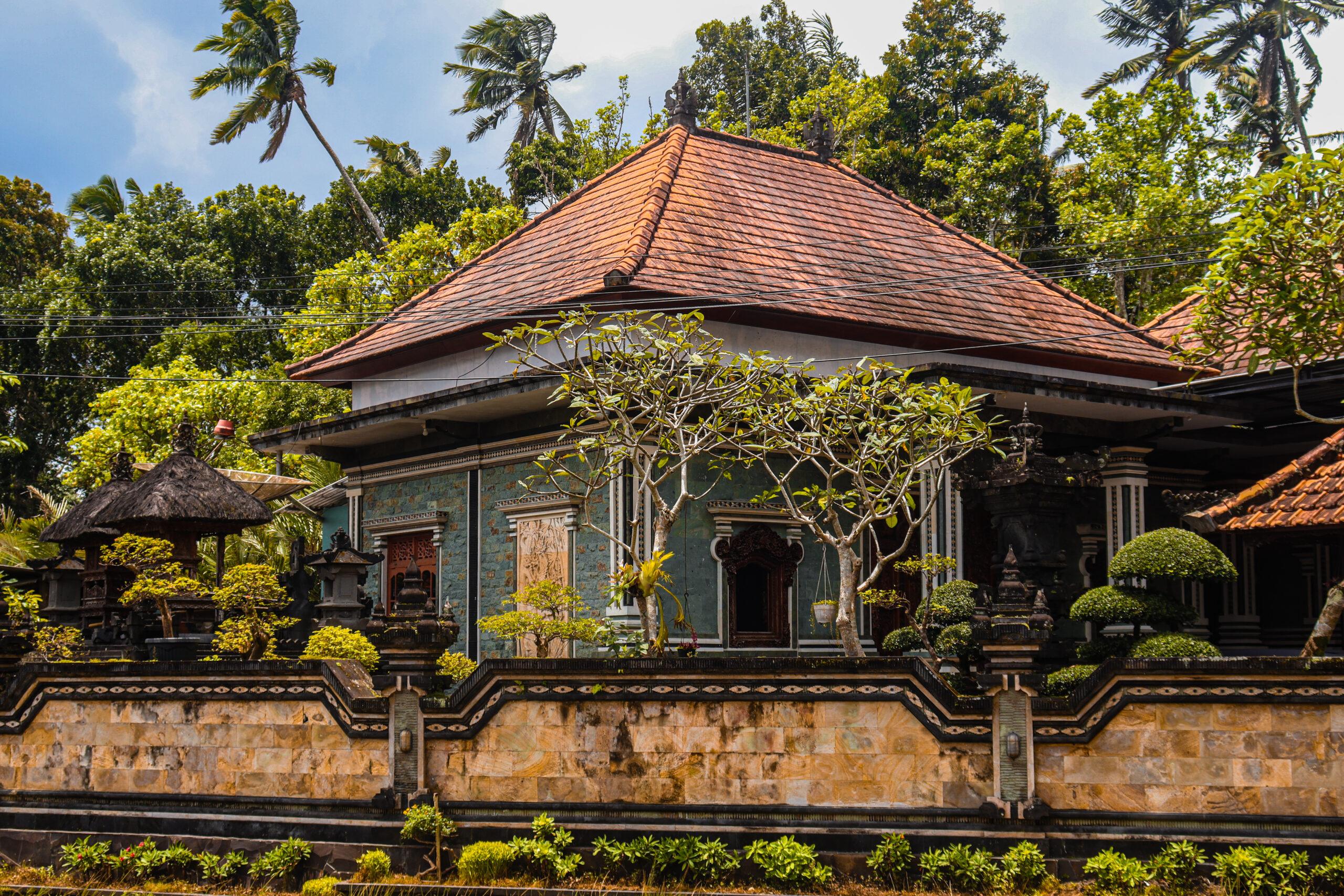-
Architecture/
Cultural Identity/
Tradition
Living Spaces, Living Traditions
Vernacular Architecture and Indonesia’s Cultural Soul

- Anton Adianto
Across Indonesia’s sprawling archipelago—where mountains meet mangroves and cultures bloom like orchids—vernacular architecture stands as a quiet sentinel of identity. These dwellings are not merely shelters but stories, etched in wood and earth, woven through space, and whispered through generations.
As modernisation quickens its pace—sweeping through cities with steel and glass—traditional architecture faces an uncertain future. And yet, in its timber frames and earthen floors lies a powerful resilience, a blueprint for belonging in an age of flux.
EMBODYING TRADITIONS, TELLING TALES
Every traditional home in Indonesia is a cultural manuscript, coded with meaning, memory and ritual. The Joglo of Central Java, with its soaring layered roof and open central hall, is more than an aesthetic form. It represents the Javanese cosmic order and reinforces societal hierarchy. Though satellite dishes now sprout beside carved wooden beams, many Joglo homes remain intact, adapting modestly to modern comforts such as electricity and plumbing.
In Bali, architectural layouts mirror Hindu cosmology. Homes are built not for convenience alone, but to honour spiritual flow—connecting sacred and profane, sunrise and ceremony. Such spatial arrangements enable ritual continuity and familial cohesion, turning every compound into a living temple of identity.
ARCHITECTURE AS SOCIAL GLUE
Beyond symbolism, vernacular architecture fosters community—physically and philosophically. In Bawömataluo, South Nias, homes known as omo hada encircle the tawolo—a generous communal space used for storytelling, dance and deliberation. The tawolo often occupies nearly 40% of a home’s second floor, a striking testament to the social life embedded in architectural form.
Even when economic constraints demand the use of industrial materials, communities fiercely preserve these gathering spaces, intuitively understanding that a house divided cannot withstand cultural erosion. It is here, under sloped roofs and among neighbours, that identity is rehearsed, reaffirmed and passed on.
ADAPTATION WITHOUT ERASURE
Survival, however, demands evolution. Indonesia’s vernacular forms have not remained static relics but have adapted to shifting socio-economic landscapes. In Kampung Inggris Pare, East Java—transformed into a bustling language-learning village—new constructions coexist with traditional spatial sensibilities. Modern hostels borrow from the proportions and rooflines of Javanese architecture, maintaining a spiritual echo of place even as function evolves.
Similarly, in Bawömataluo, the adaptive reuse of traditional houses as homestays has reinvigorated local economies without sacrificing cultural authenticity. By inviting guests into ancestral spaces, villagers cultivate both income and international appreciation for their heritage.
In Juwana, Central Java, a renovated Joglo integrates electrical wiring and indoor plumbing, yet preserves its tiered roof and open-plan core. Such hybridity reflects not compromise, but continuity—a living architecture that is able to grow while keeping its roots.
CELEBRATING DIVERSITY, EMBRACING DIFFERENCE
From the longhouses of Kalimantan to the sunlit courtyards of Kampung Naga, each vernacular style is shaped by its environment and values. In East Java’s Taneyan Lanjhang, shared kitchens and verandas promote intense social interdependence, while West Java’s Kampung Naga maintains strict separations between private and communal space, respecting both intimacy and collectivity.
This architectural diversity is not simply a product of climate or topography; it is a material expression of cultural pluralism. In preserving these forms, Indonesia not only safeguards built heritage, but affirms the dignity of difference in a nation of more than 17,000 islands.
FROM MEMORY TO MARKET
Vernacular architecture now serves not only as heritage, but as currency in the cultural economy. In cities like Yogyakarta and Surakarta, the careful restoration of traditional buildings has revived interest in historic districts, boosting tourism and civic pride. In Bali and Toraja, travellers come seeking authenticity, drawn to architectural landscapes that feel timeless and true.
When urban planners and designers integrate traditional motifs into contemporary developments, they offer a counterpoint to homogenised skylines. This blending of old and new enriches city branding while anchoring modern growth in cultural memory.
THE CUSTODIANS OF CONTINUITY
The endurance of vernacular architecture depends not only on architects and academics, but on communities themselves. In Kampung Kranggan, West Java, elders known as Kokolot still oversee village planning, mediating between ancestral wisdom and emerging needs. They are the guardians of both space and spirit.
Yet community stewardship requires support. Preservation demands more than sentiment; it needs policy, funding and public will. Government schemes that offer financial incentives and technical aid have begun to encourage restoration and adaptive reuse. Educational programmes, too, are crucial—ensuring that young Indonesians understand their architectural inheritance not as relic, but as resource.
BUILDING A FUTURE FROM THE PAST
Vernacular architecture in Indonesia is neither nostalgic nor obsolete. It is living, evolving and quietly revolutionary. It embodies the pulse of the archipelago—the reverence for ancestors, the rhythm of rain, the song of wood meeting wind.
As Indonesia continues to urbanise, the challenge is not whether tradition and progress can coexist, but how. Through adaptive reuse, policy support and the wisdom of local custodians, the nation has the chance to craft a future where modernity does not erase memory but elevates it.
In the words of architect Hassan Fathy: “Architecture is for people. It must begin with the heart.” And in the hearts of Indonesia’s vernacular homes, the nation’s identity still burns brightly, waiting not to be preserved in glass cases, but to be lived in, breathed in, and passed on.








